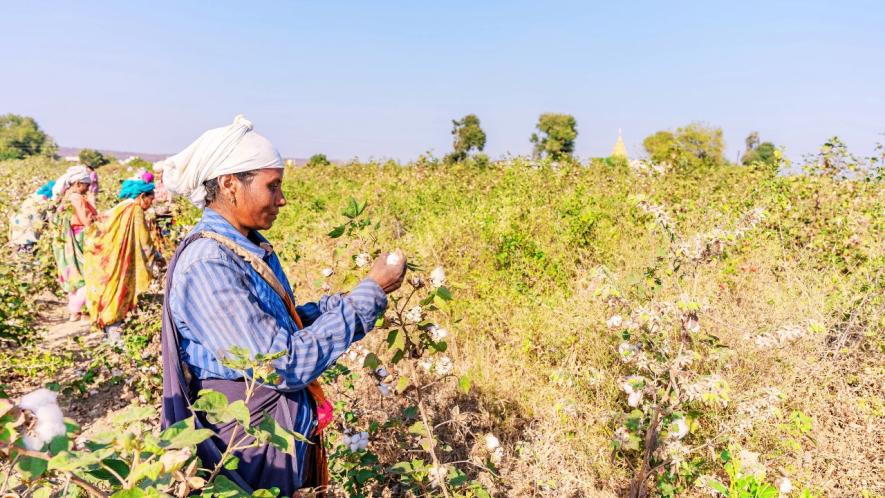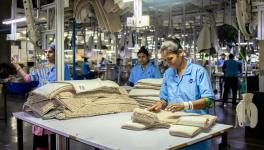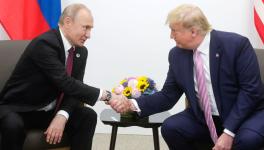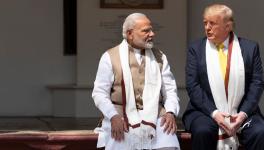Trump’s Tariff Terrorism and India’s Stance

Image Courtesy: Pexels
Economics textbooks tell us that a country imposes tariffs when it wants to protect domestic producers of imported goods. Donald Trump’s tariffs, however, serve a broader objective: they are like a military intervention, or a coup d’etat or a terrorist attack, to make nations bend to his will. Indian garment exporters, for instance, are being hit by 50% tariffs not for the protection of any American garment producers but to make India bend to Trump’s will.
This explains the anomalies in Trump’s tariff policy. Trump’s 50% tariffs against India are supposed to be punishment for buying Russian energy. China, however, is the biggest buyer of Russian energy, bigger than India; and yet the tariff rate against most imports from China is lower than 50%.
The reason for this differential treatment lies in the fact that Trump believes India to be a push-over, while China is not. China can retaliate where it hurts, by stopping exports of rare earths, for instance, while India still has not threatened any retaliation. India differs in this respect even from Brazil, the only other country slapped with a 50% tariff, which has initiated the process of retaliation against the US.
Trump’s ostensible reason for imposing a 50% tariff on Brazilian goods is even more bizarre. It is supposed to be a punishment for bringing to trial Jair Bolsonaro, its neo-fascist former president who lost the election, and who, Trump thinks, should be honourably acquitted. This is an incredible interference in another country’s justice system, but is unlikely to be the primary reason for Trump’s bellicosity. The real reason for singling out India and Brazil for 50% tariff is possibly to break up any united front against US imperialism by browbeating two of the largest Third World countries out of it.
The weaponisation of tariffs constitutes an entirely novel tactic of imperialism. Most Third World countries after decolonisation pursued a dirigiste strategy, which sought to promote self-reliance, expand the home market and use the State, especially the public sector, as the means of developing domestic production and technological capabilities.
A relentless struggle was launched by imperialism against this strategy whose ideological component consisted, initially, of pointing to the so-called success of the “gang of four” in East Asia, that is, Hong Kong, Singapore, Taiwan and South Korea. The World Bank came up with a distinction between “inward’ and “outward” looking development strategies, arguing for the superiority of the “outward” looking strategy by citing the success of the East Asian four.
An entirely dishonest intellectual argument was used toward this end, namely that the rates of export and GDP growth experienced by the East Asian four could be achieved by all countries if they pursued an “outward” looking strategy. This was absurd since the export growth rate of all countries taken together was constrained by the rate of growth of the world market, because of which the faster growth of some must be accompanied by the slower growth of others. But this argument was brushed aside by assuming that each country was a “small country” that could export as much as it liked.
Two factors tilted the debate toward the imperialist argument. One was the export success of China, which, though rooted in an altogether different socio-economic context and a different development trajectory, was presented to the world as confirming the superiority of the “outward”-looking strategy.
The second was the apparent willingness of metropolitan capital to relocate activities to the Third World, which, it was argued, would diffuse capitalism to the latter that would overcome the dichotomy between the two worlds altogether. What was assumed here was that metropolitan states would sit quietly and watch forever the resulting growth in unemployment in their domestic economies without stepping in to prevent such relocation.
All these factors, however, served to tilt the argument against dirigisme, though, of course, the material basis of this tilt lay in the class interests of the big bourgeoisie lured by the prospect of going global, and an urban upper middle class whose children had increasingly moved out of the country to settle in the metropolis, and which had, therefore, seen and continues to see itself as being more closely linked to the metropolis than to the domestic workers and peasants.
The World Bank and the International Monetary Fund had also become quite pro-active meanwhile, especially in the wake of the balance of payments crisis that several Third World countries faced after the oil-shocks. They put their employees in key decision-making positions in the finance ministries of several Third World countries, in Africa to start with and later in other countries as well, to subvert the dirigiste regimes from within. India, to its credit, held out the longest; but it too finally fell in 1991.
This is not the place to elaborate what has transpired under the subsequent neoliberal regime. But what is clear at present is that having lured Third World countries into reliance on metropolitan markets, and talked grandiloquently of a “rule-based” international order, imperialism can now arm-twist them through tariffs into following its diktat. It can threaten to inflict massive misery on millions of hapless Third World peasants and workers, including many millions of women workers, by throwing them out of employment. It is doing so already with respect to Indian cotton farmers by maintaining its own huge farm subsidies while the Narendra Modi government has recently removed the 11% import duty on cotton. Making more farmer suicides inevitable, will not alter by one whit the adverse impact on millions of India’s textile workers, of the closure of the US market through an exorbitant 50% tariff; and this is exactly what Trump’s tariff on India’s textile and garment exports to the US is threatening to do.
What is happening in the most grotesque form in Gaza, in short, can be made to happen elsewhere as well, not through military intervention but through tariff-terrorism, if a Third World country dares to defy imperialist diktat. This is a re-assertion of imperialism with a vengeance.
The lesson to be learnt is that a predominantly home-market-based, self-reliance-seeking, dirigiste development strategy, is a necessary complement to decolonisation, as India and other Third World countries had realised immediately after decolonisation. An “outward” looking development strategy makes a Third World country subservient to the diktat of imperialism because of its market dependence upon the latter, quite apart from other reasons.
One has to be thankful here to the year-long agitation of the farmers that prevented the country from abandoning its foodgrain self-sufficiency and becoming dependent on foodgrain imports from the US. Becoming import-dependent on the US for foodgrains would have handed an even more powerful weapon to imperialism to impose its will on India.
A metropolitan power that can connive in a genocide of the people of Gaza would have little compunctions about precipitating a famine in a Third World country like India by denying food imports into it, if it acts against imperialist wishes.
What is necessary for a country like India, therefore, is to alter its development strategy. This must not be interpreted to mean a mere return to the old dirigisme, but to a dirigiste strategy that seeks to keep increasing the size of the home market by promoting agricultural growth (through inter alia the institution of land reforms), by redistributing incomes in favour of the working people, and by raising the social wage through welfare state measures.
Read Also: PM Modi’s Diwali ‘Gift’ is Paid by People!
It may be thought that this is what the Modi government is seeking to do with its Goods and Services Tax (GST) concessions announced on August 15; but that claim is absurd. While the actual GST concessions, and these are not primarily for the working people and not offset by taxes on the rich, are somewhat larger than suggested by this writer (0.6% of GDP rather than 0.1%, and Rs 1.95 lakh crore rather than Rs 0.32 lakh crore), they still are pitifully paltry. An alternative development trajectory that foregrounds welfare state measures would entail at least an additional 10% of GDP to be spent by the government.
In addition, the government has to take steps to ameliorate the sufferings of the workers whose employment is going to be hit hard by the Trump tariffs. Given the fact that imperialism is weaponising tariffs, measures like export subsidies to overcome their impact, may not suffice, since Trump will then raise tariffs even further. Nonetheless these can be tried, in addition to retaliation against the US as China and Brazil are resorting to.
Besides, active efforts to find alternative markets must be made, apart from finding alternative employment opportunities for those who are likely to be its victims.
The Modi government is not only not doing anything along these lines, but is actually seeking to make concessions to the US in other spheres in order to placate it, such as by allowing duty-free cotton imports that will hurt Indian farmers. What is more, it is curtailing MGNREGS expenditure that could provide a lifeline to the distressed in rural India, at this very juncture.
Prabhat Patnaik is Professor Emeritus, Centre for Economic Studies and Planning, Jawaharlal Nehru University, New Delhi. The views are personal.
Get the latest reports & analysis with people's perspective on Protests, movements & deep analytical videos, discussions of the current affairs in your Telegram app. Subscribe to NewsClick's Telegram channel & get Real-Time updates on stories, as they get published on our website.
























